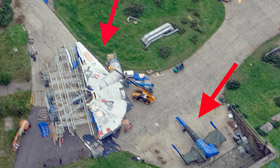
In the 2013 Spending Round, the chancellor announced a return of funding for science capital to £1.1bn in 2015-16 and promised to protect this investment in real terms. The Royal Society of Chemistry, together with many in the scientific community, broadly welcomed this move – along with the government’s plan to develop a long-term strategy for scientific infrastructure in the form of a Science Capital Roadmap. These are steps in the right direction towards strengthening the UK’s science base, but a question mark remains over how the government should divvy out their pot of science capital funding.
The Department for Business, Innovation and Skills (BIS) has proposed three scenarios for the allocation of science capital funding. Two out of these three could have a significantly negative impact on the breadth and impact of UK science and research. Our favoured scenario maintains the roles of the research councils and higher education funding bodies as holders of fairly big purse strings roughly equivalent to the 2010 budget (plus inflation). This has the potential to reinvigorate institutional research by allowing much-needed upgrading and maintenance of current equipment and making the most of investments we’ve already made. It would also ensure that new excellent science is funded through a process of peer review.
Recent government announcements about capital spending, however, have typically been for large-scale "announceable" facilities such as, for example, the Alan Turing Institute. BIS’s third scenario lends itself to the danger of capital funding being saved for these largescale projects, rather than being openly available for researchers to apply for. Although these large facilities are important, there is a real need for "bread and butter" investment in scientific infrastructure – not only to maintain and upgrade equipment in institutions, but also to purchase new equipment for projects funded by the research councils.
In this year’s budget, George Osborne highlighted his desire for the UK to “out-compete, out-smart and out-do the rest of the world". Achieving the chancellor’s vision to secure the UK’s future as a knowledge-led economy relies on the provision of instrumentation for research at all levels. This will create a strong knowledge base at universities that will support early-career researchers who may be future leaders in their field, attract leading academics and industry collaborators, and feed expertise and findings into large-scale facilities. Critically, investing in a network of local, regional and national facilities could have as much impact as investment in one facility. Without this base, we risk generating a top-heavy and unstable structure that won’t keep up with international competition.
It’s also important that funding for scientific infrastructure isn’t limited to specific technology areas, but provides support for excellence across the breadth of UK research. The government’s Eight Great Technologies have created useful focal points for the UK science and innovation base in areas of particular strategic opportunity. But by limiting the variety of science performed in the UK, we risk damaging the wider science base that enables us to nurture world-leading fundamental research and address societal and economic challenges. Over-specialism could also limit the UK’s capacity to respond and adapt to unforeseen challenges and opportunities.
So we need to invest in infrastructure to support researchers at all levels across the breadth of UK research. But what good is all this equipment if it isn’t used?
Funding decisions on science capital also need to take running costs and personnel into account. This operational funding will ensure that we realise the greatest benefit from capital investment. We can see the consequence of funding shortfalls at one national facility – the ISIS pulsed neutron and muon source operated for only 120 days out of an optimal 180 in 2013. As well as reducing research output, decreasing operational funding can also reduce the time allocated to using scientific instrumentation. This tends to encourage researchers to perform "safe" experiments with a better chance of succeeding that are more likely to obtain results that can be published in scientific journals. Securing operational funding will lessen time pressures, allowing researchers to explore more innovative lines of enquiry that could potentially lead to exciting breakthroughs.
So how should the pot look for 2020?
The planned Science Capital Roadmap demonstrates that the government recognises the central role of scientific research in reshaping the UK into a modern knowledge economy. But the UK is not in the position to be truly internationally competitive if we do not keep up with the levels of funding for research and development invested by our competitors. Over the last three decades, UK government investment in R&D has declined in real terms while governments in countries such as China and Germany have spent more. We need to provide a secure research ecosystem to attract business investment and top-class researchers – we are in serious danger of falling behind and losing the jewel in our crown if this trend doesn’t change.
We are calling for a commitment from all sides of the debate to raise UK public investment in science to the current EU average of 0.7% of GDP by the end of the next parliament in 2020. We know this is not an insignificant rise – a 3% year-on-year increase in spending relative to GDP would take political conviction. But it is not impossible and would ensure that our world-leading science base can respond to the numerous societal challenges we face, as well as continuing to drive economic growth for sustainable prosperity.
Clare Viney is executive director, communications, policy and campaigns, at the Royal Society of Chemistry
Reminder: David Willetts, the UK science minister, will join us for a live Q&A to discuss the BIS capital consultation from 12–2 pm BST on Monday 16 June. The session is open to all and will take place in the comments thread below this launch article. Please create a Guardian comment account to join in

















